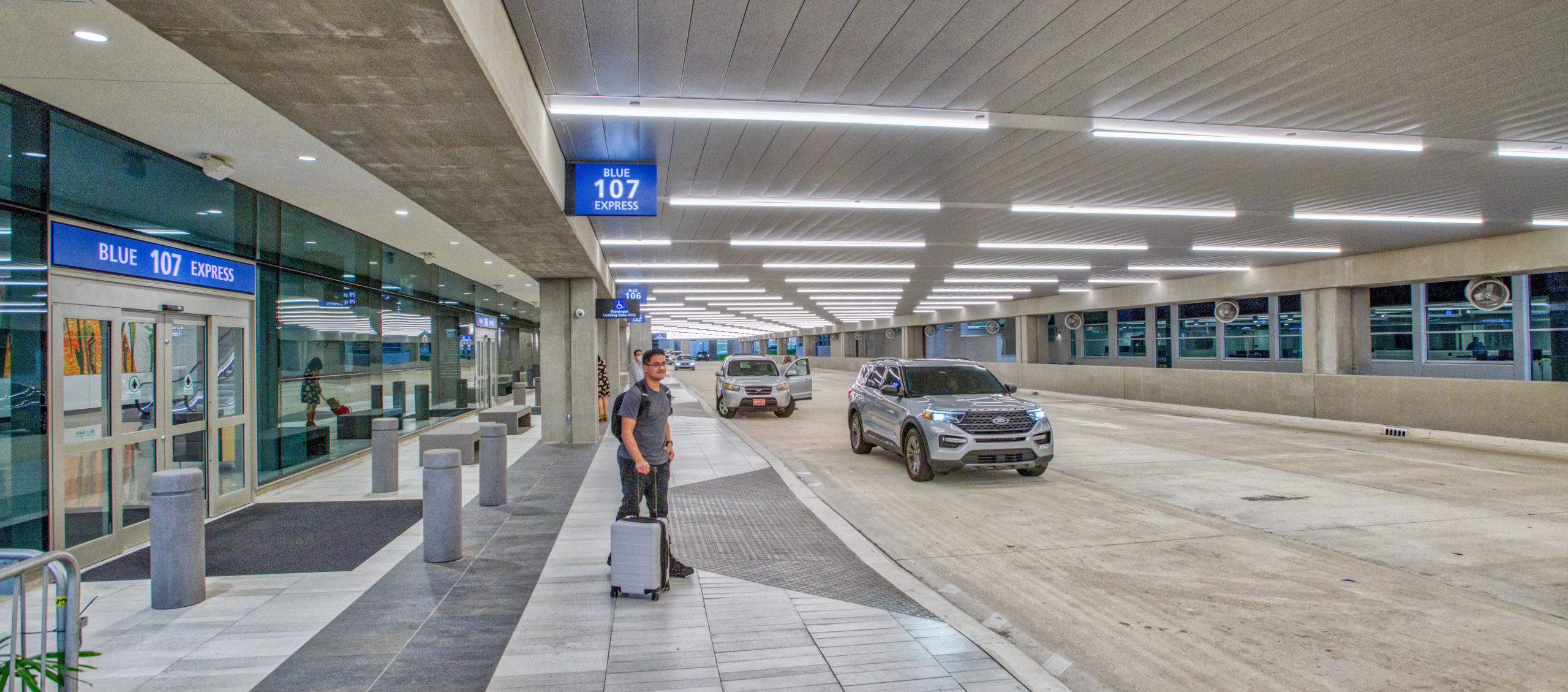
Tampa International’s curbside innovation connects passengers without checked luggage to their gates for smooth arrivals and departures
DESIGNER
2022
Tampa International Airport (TPA) has a track record for being an airport innovator. It opened the world’s first airport people mover in 1971. And now 50 years later, TPA introduced another big innovation: the first express curbsides in the U.S. designed exclusively for passengers who don’t check bags.
The capital project improves customer service, expands airport curbside capacity, increases safety and prepares the airport for future transportation technologies.
“Passenger needs and expectations are changing,” said Joe Lopano, TPA CEO. “This revolutionary project further cements TPA’s place as an industry leader, promoting smart growth that will translate into a positive economic impact for our region.”
HNTB served as architect and engineer-of-record on the progressive design-build team for the Blue and Red Side curbsides, which allow people traveling without checked bags to bypass ticketing and baggage claim areas on their way to and from gates.
“The express curbs solved a lot of problems all at once, and with the way transportation technology is changing, they really position the airport well for far into the future,” said Tom Rossbach, HNTB project director.
Project Features
- First “Express Curbside” in the U.S.
- 16 new express pick-up and drop-off lanes
- Allows passengers without bags to completely bypass ticketing
- New high efficiency Central Utility Plant
- New International Terminal APM Station
A long collaboration
The idea for the express curbsides goes back to 2011, when TPA hired HNTB to develop a Master Plan Update. Data made it clear Tampa International needed more curbside length and lanes to handle current and future peak hour demand.
The airport already had four lanes in areas designated as Red Side (north) and Blue Side (south), on two levels — one for drop-offs and the other for pick-ups.
With the airport — and the Tampa Bay region — on a growth trajectory, those lanes were reaching a breaking point. Plans called for adding four additional lanes on each side at each level — a total of 16 — adjacent to the existing lanes.
“We knew more lanes were needed, but the question was how do we do that without people crossing over the inner lanes,” Rossbach said.
That posed a potential safety issue, and a customer service problem as travelers would have to cross up to eight lanes of traffic to get to ticketing and from baggage claim.
“This also would cause roadway back-ups,” Rossbach said. “When people aren’t crossing the roads, the roads are more efficient.”
The Master Plan research showed that 53% of passengers at the airport don’t check bags. So the new outer lanes were designed exclusively for those passengers, providing connections via escalator, elevator or stairs in a vertical circulation building to the transfer level of the airport.
“It allows people to get out of cars and go right to the gates or to go right from the gate to the curb,” Rossbach said. “It’s a less time-consuming process once you get to the airport. They completely bypass ticket lobbies and baggage claim that can be congested at peak times.”
For the future
These first-of-their-kind curbs prepare the airport for far into the transportation future, ultimately adding 16 technology-enabled lanes along the curbsides ready for use by automated and connected vehicles, which will put curbsides at a premium in the decades ahead.
Uber and Lyft had already started moving the traffic away from parking facilities and toward the curb. And the autonomous vehicles in the future, whether they are rideshare, rented or privately owned, may never park.
“They’re going to be dropping those passengers off at the curb and leaving,” Rossbach said. “That reduces parking demand and increases curbside demand.”
That same research on the future of autonomous vehicles prompted HNTB to suggest converting the bottom floor of a parking garage into new office space for the Tampa International Airport police and maintenance team.
“There was no room for a building for those offices anywhere on the airport campus,” said Andres Chacon, HNTB project manager. “We saw an opportunity with the parking garage and presented a solution that solved a number of problems, including repurposing some real estate that was losing its value.”
TPA’s Blue Express curbs opened in November 2021, two months ahead of schedule and in time for the Thanksgiving rush. Eight additional express lanes on the Red Side of the airport are expected to open in early 2025, doubling the airport’s curbside capacity.
“Tampa International prides itself on being an airport innovator,” said Jeff Siddle, TPA’s Vice President of Planning and Development. “We’ve done it in the past with the people mover, and we did it with the express curbs. Looking forward, we will continue to seek new, innovative ways to improve airport efficiency and the overall passenger experience.”
“One of our top goals as an airport is providing our guests with a world-class experience,” said John Tiliacos, TPA’s Executive Vice President of Operations and Customer Service. “These express curbs provide that type of experience and make a really strong first impression on travelers.”
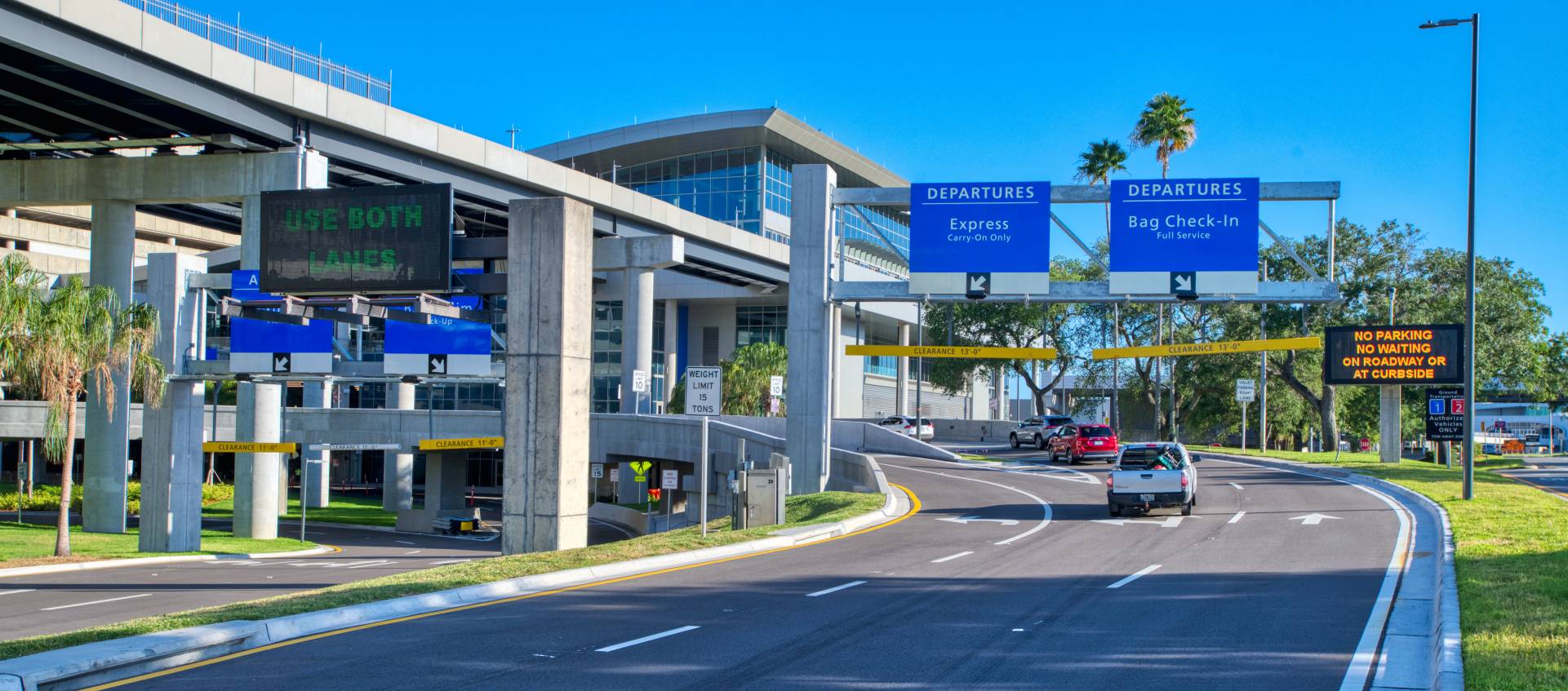

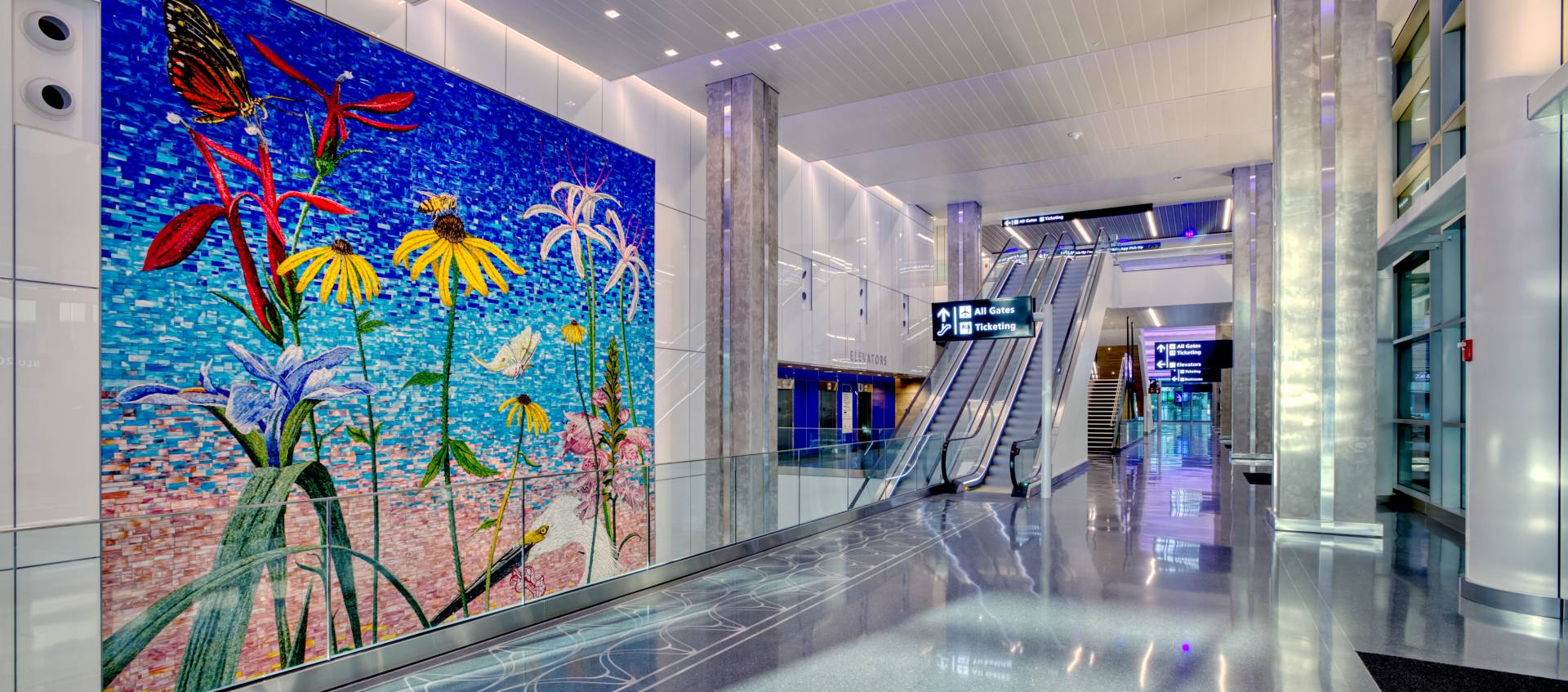
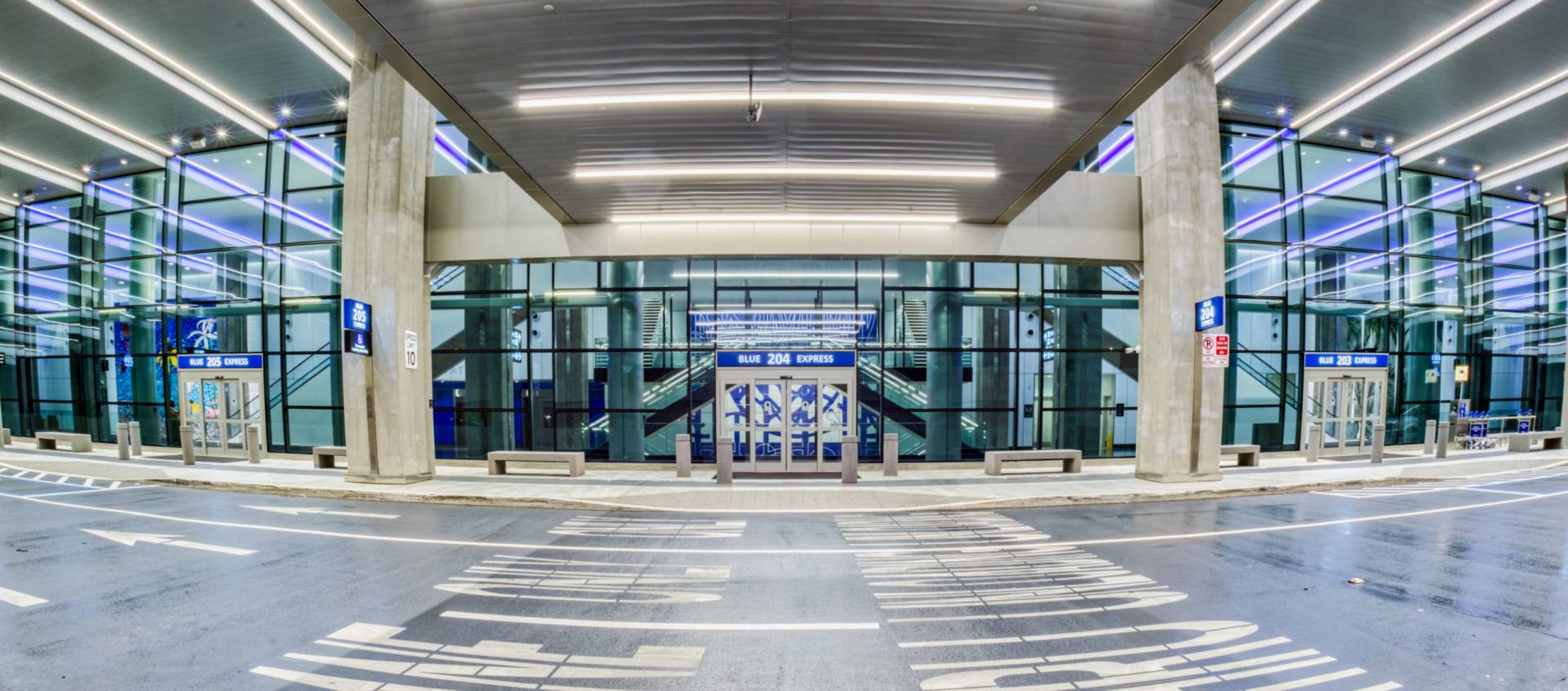
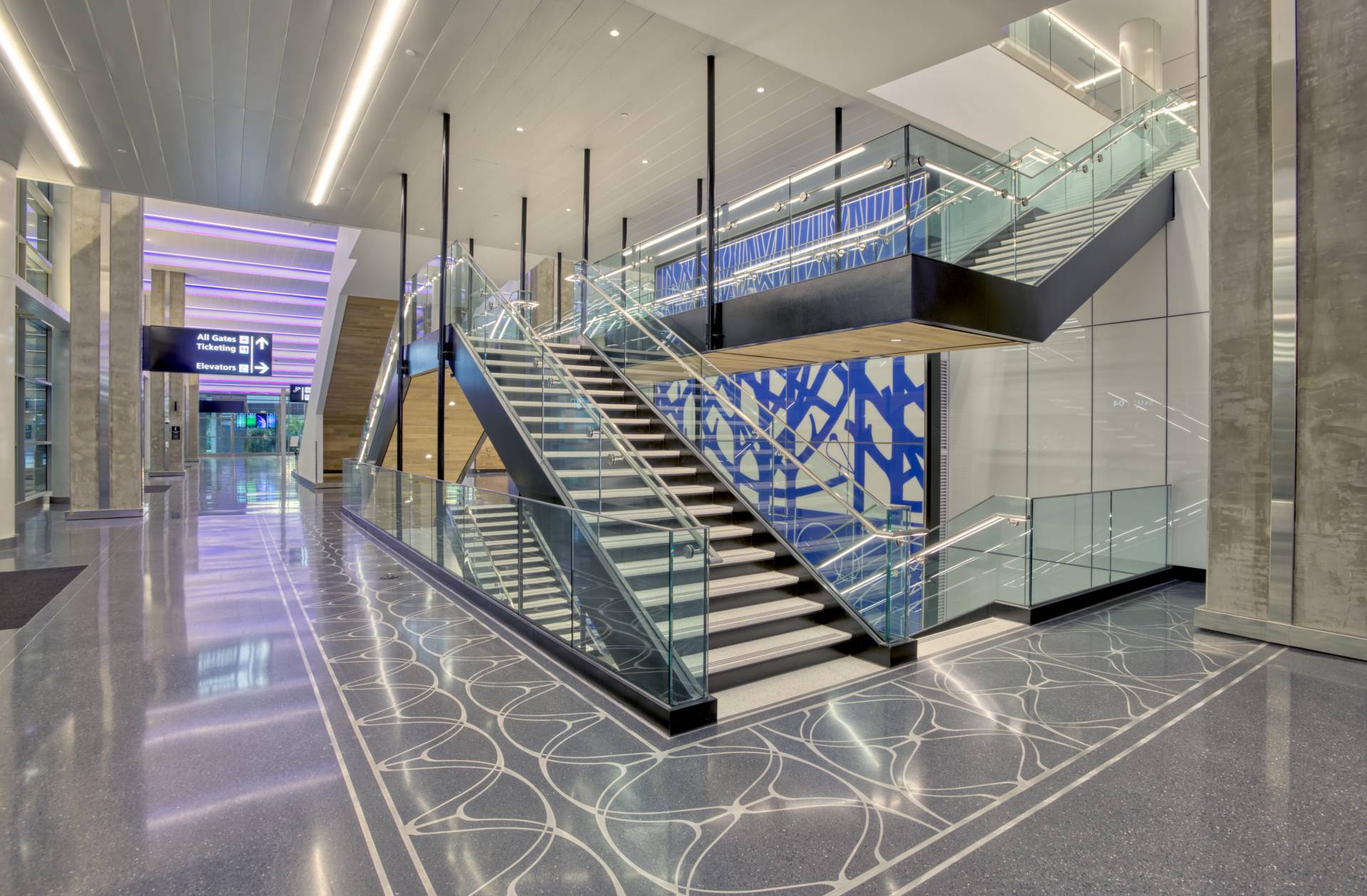
For the first time, J.D. Power names TPA #1 large airport in 2022 North American Airport Satisfaction Study. It shows the airport’s commitment to enhanced passenger experiences and innovations, like the express curbsides, is appreciated by travelers. Learn more
Exceeding expectations
In addition to the express curbsides, a new Central Utility Plant was part of the second phase of the three-phase Master Plan. The airport needed a new one, and the selected location was tucked along the curve of the Red Side departure drives.
The 10,000-square-foot building features greater efficiency and a striking architectural design.
The curved building follows the curve of the roadway, with huge windows that allow guests exiting the airport to see the maze of brightly colored pipes and mechanical equipment inside. At night, multicolored LED lighting enhances the effect. The reclaimed water used in the plant’s chillers do double duty as an architectural water feature.
But it’s not just a work of art inside and out. The plant also reduces water and energy consumption and provides insights into how energy and water are being used to allow for continuous upgrades in efficiency.
A model for other airports
The concepts unveiled with the Blue Express Curbsides and the Central Utility Plant are attracting the attention of other airports.
“The word is getting out there and the teams at other airports are looking at Tampa International Airport to see what they did,” Rossbach said. “There are nuances and different conditions at every airport. But the express curb idea can be rolled out at many airports.”
The same is true of the approach to the Central Utility Plant, said Andres Chacon, HNTB project manager. “We showed with this project that a largely mechanical building doesn’t need to be hidden away. It can be beautiful, and something special.”
SEE MORE
SEE MORE ARTICLES
MORE DESIGNER STORIES
LOWER.COM FIELD
SIXTH STREET VIADUCT
I-74 MISSISSIPPI RIVER BRIDGE
I-69 FINISH LINE
JTA's ORANGE LINE
